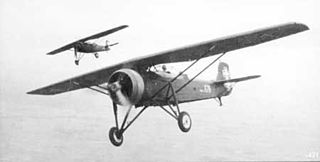
The ANBO IV was a reconnaissance aircraft used by the Lithuanian Air Force in World War II, designed by Lithuanian aircraft designer Antanas Gustaitis. The Lithuanian ANBO 41 was far ahead of the most modern foreign reconnaissance aircraft of that time in structural features, and most importantly in speed and in climb rate. All ANBO 41 aircraft were likely destroyed during World War II.

The Lithuanian Air Force or LAF is the military aviation branch of the Lithuanian armed forces. It is formed from professional military servicemen and non-military personnel. Units are located at Zokniai Air Base near the city Šiauliai, at Radviliškis and Kaunas.
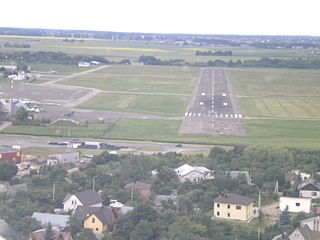
S. Darius and S. Girėnas Airport, also known as Aleksotas Airport, is a small airport located in Aleksotas district of Kaunas City (Lithuania), about 3 kilometres South-west from city centre. On May 6, 1993, the airport was named after the Lithuanian pilots Steponas Darius and Stasys Girėnas, who perished in a crash near the end of an attempted non-stop flight from New York to Lithuania in 1933.

The LVG C.VI was a German two-seat reconnaissance and artillery spotting aircraft used during World War I.

The ANBO I was a single-seat aircraft developed in Lithuania, proposed as a trainer for the Army It was a low-wing, braced monoplane of conventional tailwheel configuration. The fuselage structure was of fabric-covered welded steel tube, The wing had a wooden, two-spar structure and was fabric covered but the fuselage, also fabric covered, had a welded steel tube structure.
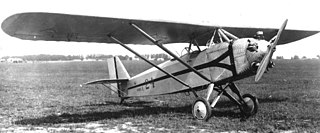
The ANBO II was a parasol-wing monoplane aircraft built in Lithuania in 1927 as a pilot trainer for the Army. It was the first Lithuanian trainer aircraft of own design. It was eventually reequipped with more powerful engine for the Aero Club of Lithuania in 1931 before being written off after a crash in 1934.
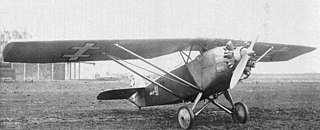
The ANBO III was a parasol-wing monoplane training and utility aircraft designed for the Lithuanian Army in 1929. It became the first aircraft of Lithuanian design to be built in series, with two batches of four aircraft produced in 1930 and 1931. The ANBO IIIs also saw service as reconnaissance machines.
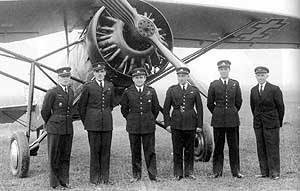
The ANBO V was a parasol wing monoplane training aircraft designed for the Lithuanian Army in 1931. A developed version, the ANBO 51 followed in 1936 and 1938.

Karo Aviacijos Tiekimo Skyrius was the Army Aviation Workshops of Lithuania, established at Kaunas. The facility was considerably modernized under the leadership of Antanas Gustaitis, who also designed a variety of aircraft to be built there in small series in the 1920s and 1930s under the designation ANBO.
The Arado V.1 was a prototype airliner, built in Germany in 1927. It was a single-engine, high-wing braced monoplane with tailwheel undercarriage. It made several long-distance flights, including carrying mail to South America, before being exhibited in Berlin in 1929, when it was bought by Deutsche Luft Hansa.

The Halberstadt C.V was a German single-engined reconnaissance biplane of World War I, built by Halberstädter Flugzeugwerke. Derived from the Halberstadt C.III, with a more powerful supercharged 160 kW (220 hp) Benz Bz.IVü engine, it saw service only in the final months of the war. Cameras were mounted in the observer's cockpit floor.

The Caudron C.280 Phalène ("Moth") was a civil utility aircraft built in France during the 1930s. It was a high-wing braced monoplane of conventional configuration with fixed tailskid undercarriage. The pilot and two-three passengers were accommodated within an enclosed cabin. The structure was wooden throughout, with the forward fuselage skinned with plywood, and the rest of the aircraft fabric-covered.

The DFW C.IV, DFW C.V, DFW C.VI, and DFW F37 were a family of German reconnaissance aircraft first used in 1916 in World War I. They were conventionally configured biplanes with unequal-span unstaggered wings and seating for the pilot and observer in tandem, open cockpits. Like the DFW C.II before them, these aircraft seated the gunner to the rear and armed him with a machine gun on a ring mount. Compared to preceding B- and C-class designs by DFW, however, the aerodynamics of the fuselage were more refined, and when coupled with more powerful engines, resulted in a machine with excellent performance.

The Ansaldo A.120, sometimes called the FIAT A.120 since FIAT bought Ansaldo, was a reconnaissance aircraft developed in Italy in the 1920s.

The LVG C.V was a reconnaissance aircraft produced in large numbers in Germany during World War I.

The ANBO VIII was a Lithuanian bomber-reconnaissance monoplane designed by Antanas Gustaitis and built by Karo Aviacijos Tiekimo Skyrius.
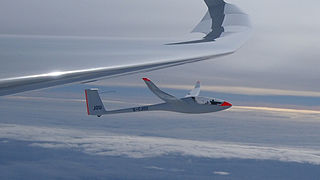
The LAK-17 is a Lithuanian single-seat sailplane that was designed at the Lithuanian Aero Club, and is manufactured by Sportinė Aviacija.

The LAK-12 is a Lithuanian mid-wing, single-seat, FAI Open Class glider that was designed and produced by Lietuviškos Aviacinės Konstrukcijos (LAK) in Lithuania and later by Sportine Aviacija and Sport Aviation USSR.

The Norman Aviation Nordic VII is a Canadian advanced ultralight aircraft, that was designed by Jacques Norman and produced by Norman Aviation of Saint-Anselme, Quebec. The aircraft was supplied as a kit for amateur construction or as a complete ready-to-fly-aircraft.

















